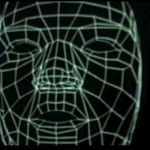
William Caraher, assistant professor at the University of North Dakota and writer of the site “The Archaeology of the Mediterranean World” discovered an interesting early use of computer analysis for an archaeological area in Cyprus, Eastern Mediterranean. The original reconnaissance survey was described by the team composed by J. M. Adovasio, G.F. Fry, J.D. Gunn, and R.F. Maslowski in an article appeared in World Archaeology 6 in 1975, and entitled: “Prehistoric and historic settlement patterns in western Cyprus (with a discussion of Cypriot Neolithic stone tool technology)“.
Although the descriptions of the sites (“large settlement of the Cypro-Archaic Age (600-400 BC)” and “very large Hellenistic town” (325-50 BC)“), were “pretty superficial“, according to Careher, the article features a series of computer generated Ascii-Art maps, showing, in a diachronic approach, the location of Medieval/Byzantine material and even modern settlements.
The original team made use of Harvard’s SYMAP software, a relatively ‘easy’ system for the non-cartographer to make maps,( and ancestor of modern GIS technologies), run on a mainframe at the University of Pittsburgh. The results, which include both elevation and archaeological data, emphasize the process of data recovering, computer analysis and carthographic rendering, without attempting to hide the aesthetic character of computer generated imagery.




 Related:
Related:
Video: Allan Schmidt talks about the Harvard Laboratory for Computer Graphics and Spatial Analysis, in Nick Chrisman 2006 ESRI Press book “Charting the Unknown: How Computer Mapping at Harvard Became GIS.”
Video and article: The invention of GIS, from the Harvard Gazette
Unit 23 – History of GIS, the University of British Columbia, Department of Geography
A Pictorial History of the Expansion of the Lansing, MI Metroploitan Area using “SYMAP” time-lapse Geographic Information System, on Wikipedia





Leave a Reply